No products in the cart.
Blog, potato (Solanum tuberosum)
Fine Tuning Germination of Older True Potato Seeds
I start thousands of true potato seeds every year. You would think that I would be an expert by now, but my results suggest otherwise. One of the biggest problem areas for me is starting older TPS. I grow a lot of genebank accessions that are often decades old and they just don’t germinate as well as my seeds. Annoyingly, I rarely even get germination close to what the genebank testing revealed. I am good at starting fresh seed, but not very good with the old stuff.
This year, I ran a little experiment to see if I can fine tune my seed starting process. I tested six batches of six year old mixed seed which has been stored at room temperature. 100 seeds were sown in each pot. These were exposed to combinations of soil cover or no cover, bagged pots or unbagged, and direct or indirect light. Uncovered seeds were just pressed into the surface of the soil with fingertips. In the pots with covered seeds, I sprinkled 2.5 cubic inches of soil over the seeds and slightly tamped down the surface with another pot. TPS needs light to germinate, but not too much. The question is why. Does too much light reduce germination on its own, or is there a secondary factor like having the soil of the surface dry out? Let’s find out…
All pots were evaluated on day 15. Many will continue to germinate, but I know from experience that the majority of the germination takes place in the first two weeks. If the numbers change significantly in another month, I’ll update this post. The temperature floor in our seed starting room is 55 degrees and the daytime temps rise to the upper 60s, which should be a good range for potato seeds.
First up, no soil cover, no bag, and indirect light. This one was hard to count, but I came up with 16 seedlings.
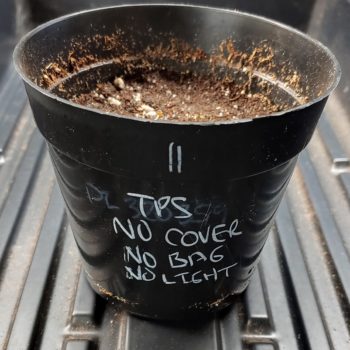 |
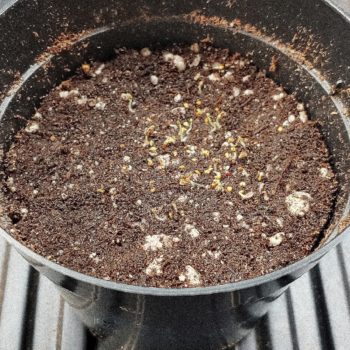 |
No soil cover, no bag, under lights. I get 3 seedlings.
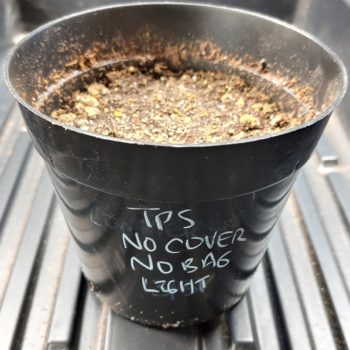 |
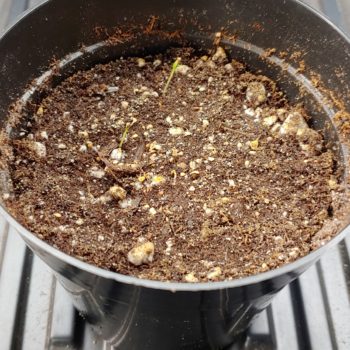 |
1/4″ soil cover, no bag, under lights. I get 25 seedlings.
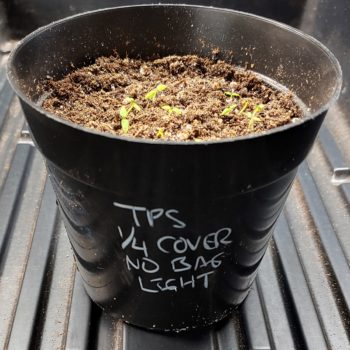 |
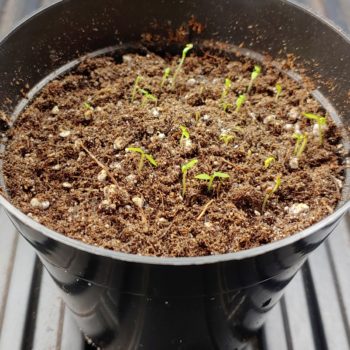 |
1/4″ soil cover, bag, under lights. I get 27 seedlings.
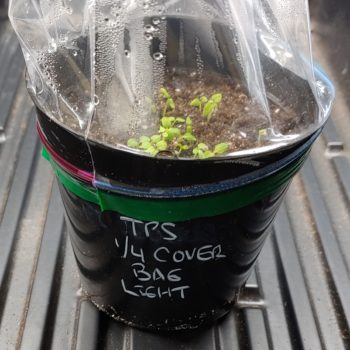 |
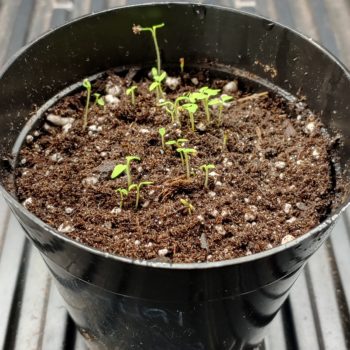 |
No soil cover, bag, under lights. I get 40 seedlings.
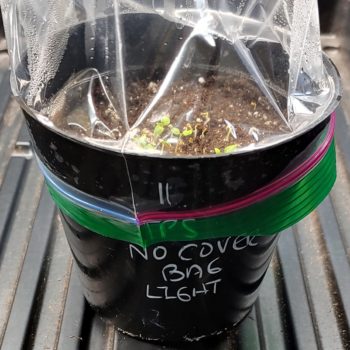 |
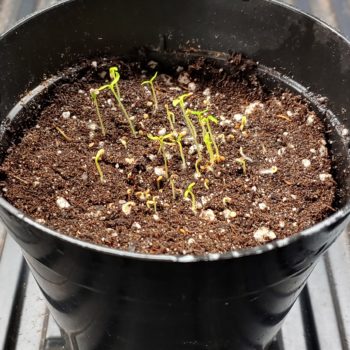 |
No soil cover, bag, and indirect light. I count 39 seedlings.
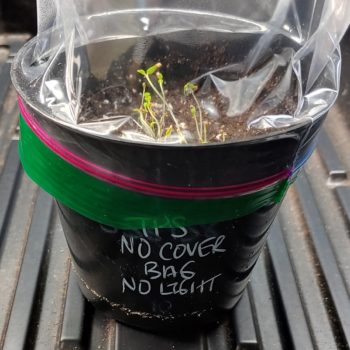 |
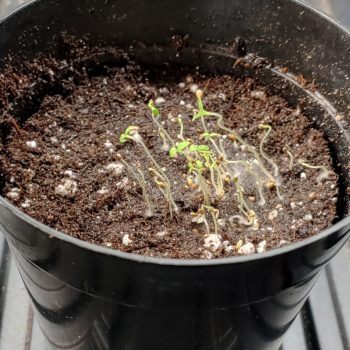 |
These results suggest that light intensity is not an important factor. In this test, pots were placed under grow lights or in the corner of our seed starting room, where it is fairly dim. I know from previous tests that seeds started in complete darkness germinate poorly, so I didn’t test that again this time. The much more important factor appears to be maintaining sufficiently high humidity. Humidity in our seed starting room is usually about 80%, but it must be close to 100% in a bagged pot. I expected to see a significant difference between the direct and indirect light pots because pots under lights reach a higher temperature during the day. I was surprised to see that it mattered very little. Bagged pots performed similarly with or without direct light. I was less surprised that there was not much difference between 1/4 inch of soil cover with and and without a bag, since the soil cover also serves to maintain a more humid environment for the seeds.
From these results, it appears that it is important for light to reach the seeds, although the intensity of the light is not important. It is also important to keep the seed starting environment at maximum humidity. The additional day vs. night temperature difference under lights appears not to be a significant factor. The two best methods were both for uncovered seeds, in bagged pots, with or without direct light. The seedlings under direct light were in the best condition, while the seedlings under indirect light were already growing spindly and there was some fungal growth in the pot. In conclusion, no soil cover, bagged pots, and direct daytime light are the best combination I have tried so far for old TPS. This is a useful result because, up until now, my standard has been 1/4″ of soil cover under lights. It appears that I can improve on that now.

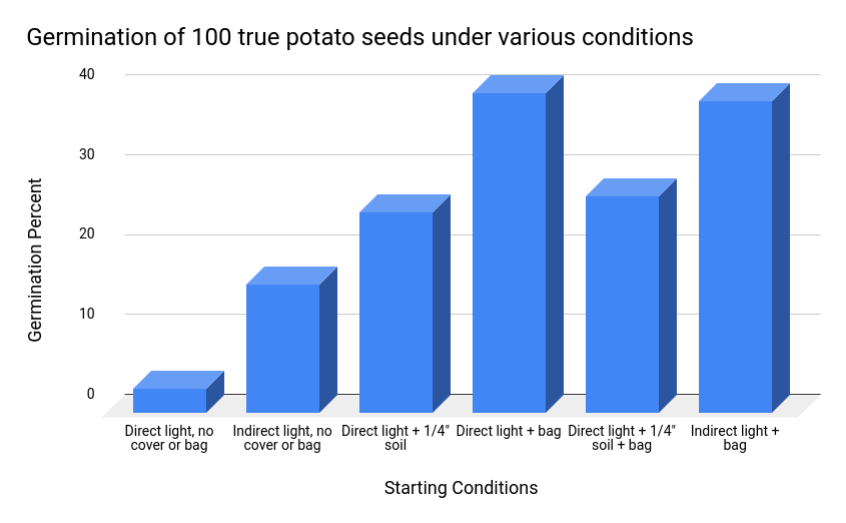
This is very interesting William regarding your results. I am going to do a little research comparing the 1/4″ of soil cover under lights vs. the no cover under the lights. Enjoyed reading this.
Very useful data as this experienced grower (x >25 yrs) begins to dapple in raising TSP. Thanks, William